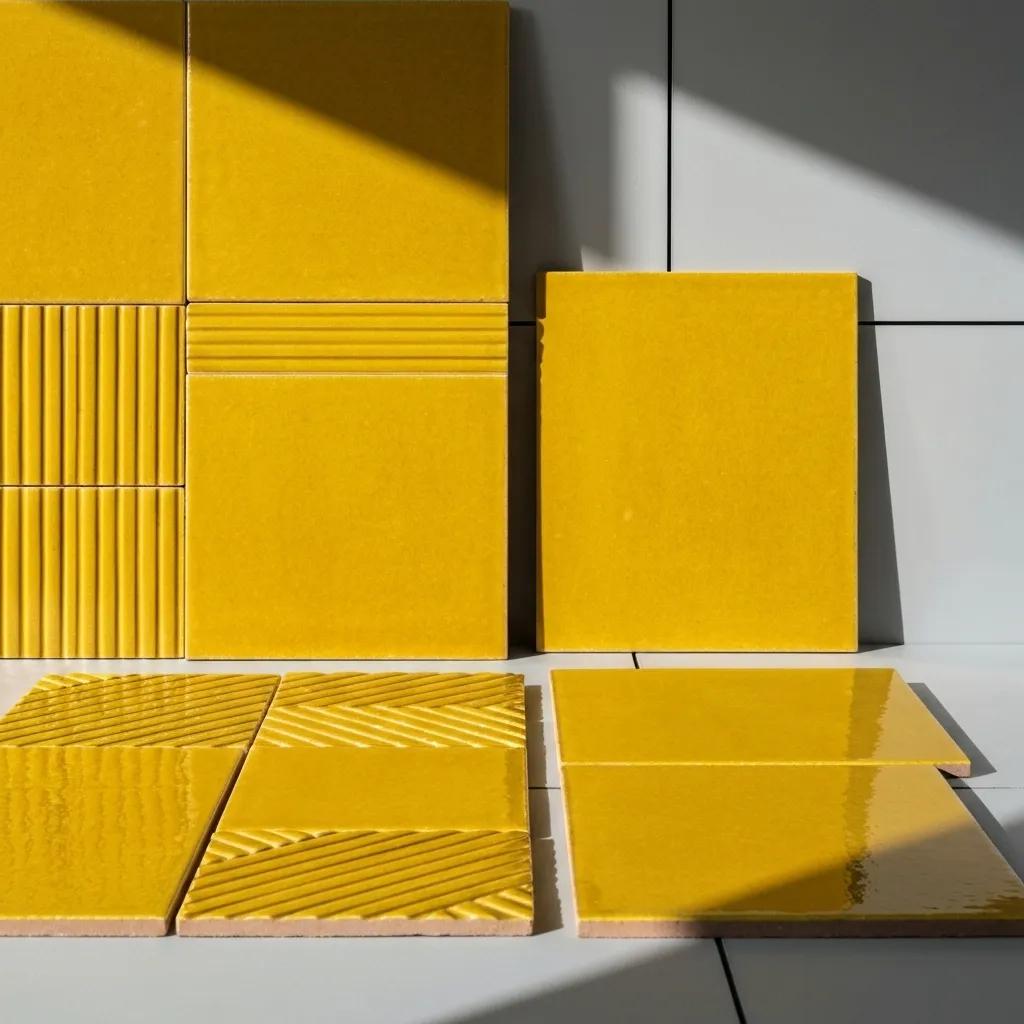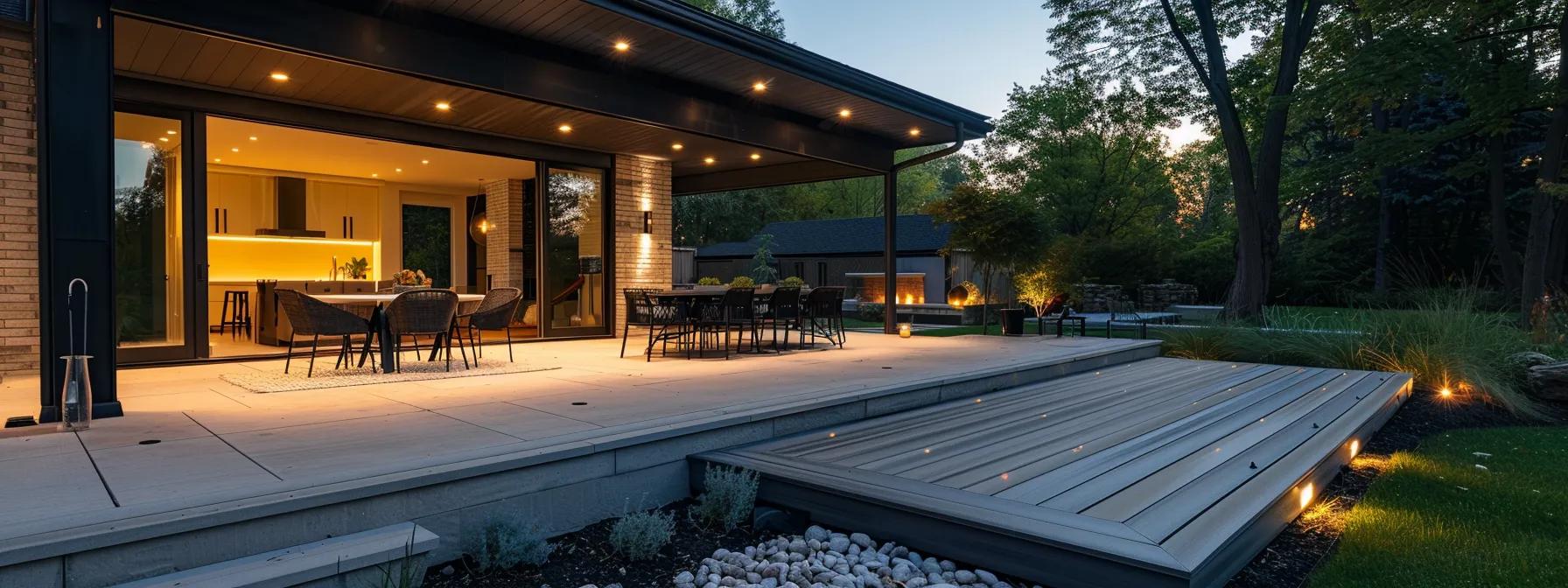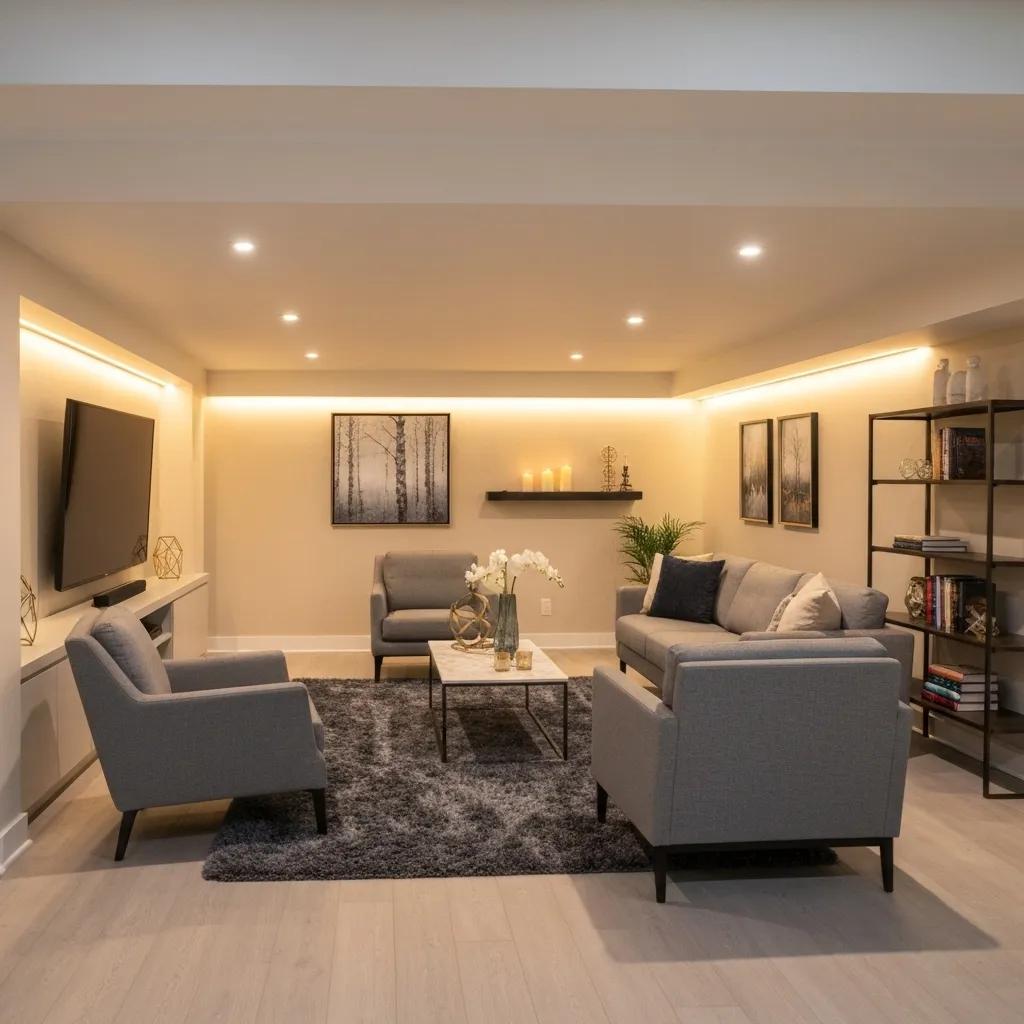
Why a Finished Basement Adds Value to Your Home: Understanding ROI, Appraisal, and Living Space Benefits
Finishing an unfinished basement transforms underused space into functional living areas while delivering significant financial gains.
A finished basement increases home equity by converting raw space into livable square footage that both appraisers and buyers value, often recouping 70–75% of the project cost at resale.
National Association of Realtors, Remodeling Impact Report (2024)
El valor de las mejoras en el sótano
Los estudios de mercado indican que los sótanos terminados pueden aumentar el valor de una vivienda, a menudo recuperando una parte significativa del costo de la remodelación en el momento de la reventa. La adición de espacio habitable funcional, como dormitorios o baños, contribuye significativamente a este aumento de valor.
This research supports the claim that finished basements can increase a home’s value by recouping a significant portion of renovation costs at resale.
This basement living space transformation not only boosts usable area but also strengthens overall market position.
In this concise guide, homeowners will learn how basement living space transformation drives return on investment (ROI), influences appraisal metrics, balances cost versus value, enhances market and lifestyle appeal, and reveals smart strategies for design, materials, and professional installation.
Key sections cover:
- How much value a finished basement contributes through ROI, square footage, and market impact
- Appraisal criteria that determine whether basement remodels count toward livable area
- Cost versus value comparisons by project type and region
- Lifestyle and buyer-appeal benefits gained from additional functional space
- Actionable tips to maximize value with design choices, quality materials, and contractor selection
How Much Value Does a Finished Basement Add to Your Home?
A finished basement increases home equity by converting raw space into livable square footage that both appraisers and buyers value, often recouping 70–75% of the project cost at resale. This basement living space transformation not only boosts usable area but also strengthens overall market position.
What Is the Typical Return on Investment (ROI) for Basement Finishing?
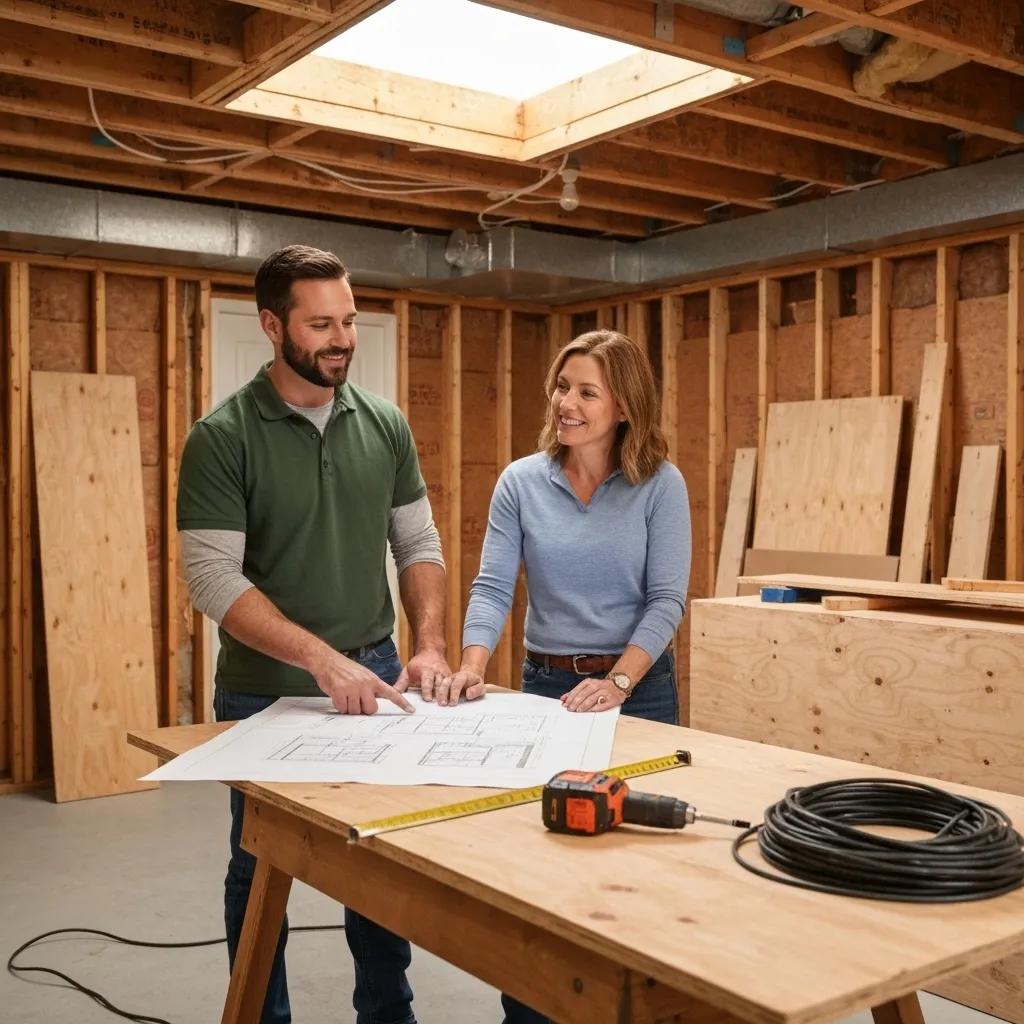
Typical ROI for basement finishing falls between 70% and 75% of total project costs, making it one of the highest-yielding home improvements.
Remodeling Magazine, Cost vs. Value Report (2024)
Consideraciones de costos y valor en remodelaciones de sótanos
El retorno de la inversión (ROI) para el acabado de sótanos suele oscilar entre el 70% y el 75% del costo total del proyecto. Factores como el área de superficie terminada, las características integradas y las tendencias locales de reventa influyen directamente en el porcentaje de recuperación.
This report provides ROI data for basement remodeling projects, confirming typical recoup percentages between 70% and 75%.
Factors such as finished surface area, built-in features, and local resale trends directly influence recoup percentage.
Key ROI drivers include:
- Quality of finishes and fixtures enhancing perceived value
- Integration of a bathroom or kitchenette for self-contained living
- Compliance with local building codes that qualify finished space as square footage
These elements collectively elevate resale appeal and lay the groundwork for appraisal benefits.
How Does a Finished Basement Increase Usable Living Space?
A finished basement expands functional living area by transforming raw concrete into defined rooms that support family activities, home offices, and guest accommodations.
Primary space enhancements:
- Family Room Creation – Provides an additional gathering area for entertainment and relaxation
- Home Office Setup – Offers dedicated workspace in a growing remote-work market
- Guest Suite Installation – Adds privacy with bedroom and optional bathroom
These room transformations establish a seamless flow from main floors to lower levels and prepare homeowners for appraisal inclusion.
What Impact Does a Finished Basement Have on Property Market Value?
A finished basement enhances property market value by increasing total square footage, elevating listing appeal, and often accelerating sale timelines. Buyers prioritize homes with move-in-ready features, and added rooms in the basement signal turnkey convenience.
Market benefits include:
- Higher listing price per square foot compared to unfinished basements
- Increased buyer interest driving competitive offers
- Faster time on market in neighborhoods with high demand for extra living space
These market advantages transition into appraisal considerations under certified guidelines.
Does Finishing a Basement Increase Home Value According to Appraisers?
A finished basement typically counts as livable area when it meets egress, ceiling height, and moisture-control standards, prompting appraisers to factor it into total square footage and valuation. For more information, check out our key factors in basement finishing costs for des moines.
How Do Appraisers Calculate Finished Basement Value?
Appraisers apply a cost-per-square-foot approach, adjusting for finished quality and functionality to determine additional value. Comparable sales with similar basement finishes establish a baseline for market adjustments.
Calculation steps:
- Establish local per-square-foot rates for finished basements
- Adjust for room types (bathroom, bedroom, living area) and finish level
- Factor in depreciation and compliance with building codes
This method ensures consistent valuation across properties and underpins recoup metrics.
Does a Finished Basement Count as Livable Square Footage?
Yes, appraisers include basement finishes in livable square footage when the space has adequate ceiling height, safe egress windows, proper insulation, and finished walls and floors. These criteria align basement space with other habitable rooms for appraisal purposes.
Meeting these requirements guarantees maximum credit for basement area in overall property valuation.
What Are the Legal and Safety Requirements That Affect Basement Appraisal?
Legal egress windows, minimum 7-foot ceiling heights, moisture barriers, and finished HVAC and electrical systems qualify a basement as livable space. Non-compliant areas may be valued at lower per-square-foot rates or excluded entirely. For more information, visit key factors in basement finishing costs for Des Moines.
Ensuring code compliance not only protects occupants but also secures full appraisal credit and culminates in cost recovery benefits.
What Are the Cost vs. Value Considerations for Basement Remodeling?
Balancing project expenses against resale recapture requires understanding typical cost breakdowns and value drivers for specific room additions and regional markets.
How Do Basement Finishing Costs Compare to Added Home Value?
A regional cost-to-value comparison highlights how location impacts ROI recapture:
| Region | Average Project Cost | Typical Value Recaptured |
|---|---|---|
| Northeast | $30,000–$45,000 | 70% |
| Midwest | $20,000–$35,000 | 75% |
| South | $25,000–$40,000 | 72% |
| West | $35,000–$50,000 | 68% |
Local labor rates and material availability shape these figures and guide budgeting decisions.
Which Basement Rooms Add the Most Value: Bathroom, Bedroom, or Living Area?
A breakdown of room-type benefits clarifies where homeowners see the greatest resale return:
| Room Type | Feature | Value Add |
|---|---|---|
| Bathroom | Full bath convenience | Recoups ~80% of cost |
| Bedroom | Additional sleeping quarters | Recoups ~75% of cost |
| Living Area | Open-plan family space | Recoups ~70% of cost |
Adding a bathroom generally delivers the highest recoup percentage, while versatile living areas drive broader buyer appeal.
How Does Regional Data Influence Basement Remodel ROI?
Regional market demand, climate-driven moisture control needs, and local comparables determine ROI variability. In colder regions, finished basements often command higher buyer interest for year-round living, while in warmer climates, moisture barriers and HVAC upgrades can impact project cost more heavily.
Understanding these geographic factors refines ROI expectations and informs design prioritization.
What Lifestyle and Market Appeal Benefits Does a Finished Basement Provide?
Beyond financial gains, a finished basement enriches daily living by supplying adaptable spaces for work, play, and multigenerational needs.
How Does a Finished Basement Expand Functional Living Space?
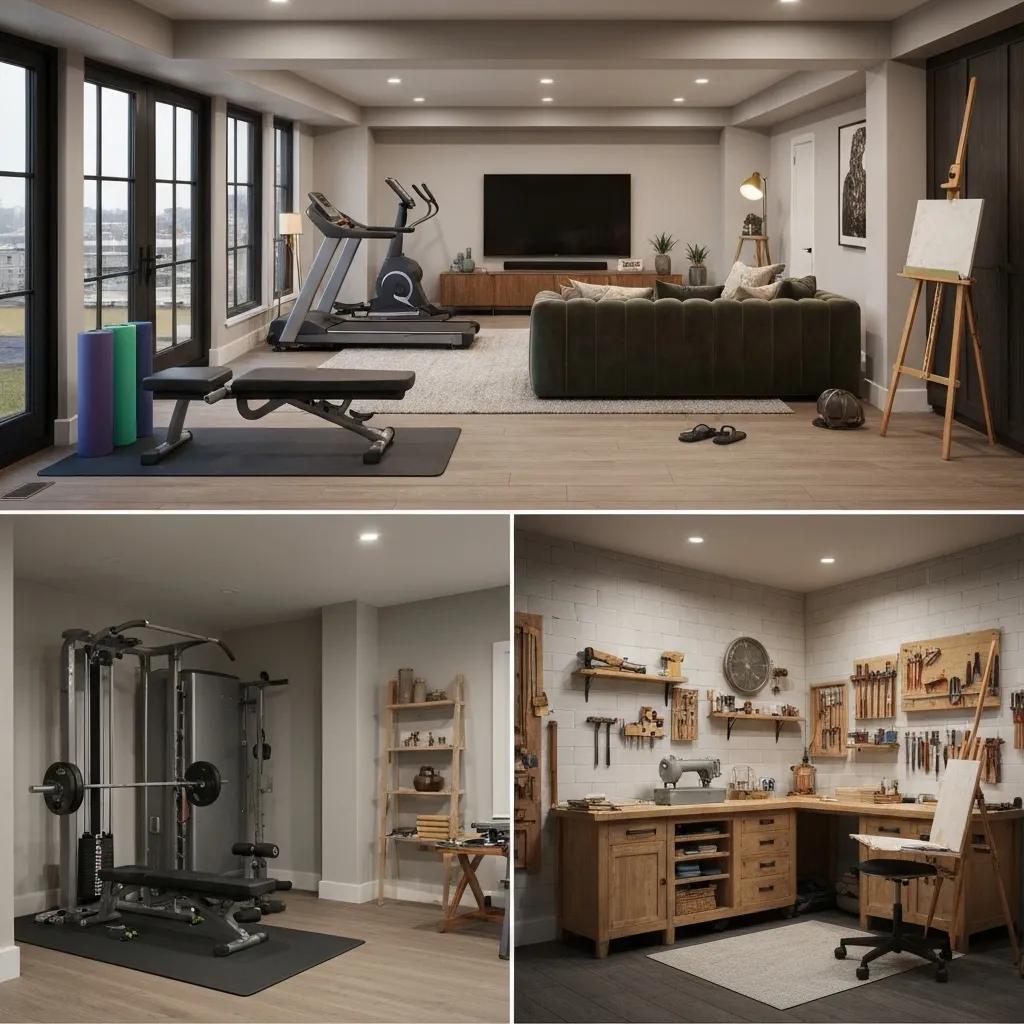
By introducing defined zones, a finished basement enables multiple simultaneous activities—media viewing, fitness, and guest hosting—without competing for main-level square footage.
Key functional uses:
- Dedicated home gym for health and wellness
- Media or gaming room for family entertainment
- Craft or hobby studio for personalized projects
These use cases enhance lifestyle flexibility and motivate buyer interest.
Why Do Homes with Finished Basements Sell Faster and Attract More Buyers?
Homes offering move-in-ready, climate-controlled basement spaces differentiate themselves in competitive markets, leading to increased showings and quicker offers.
Buyer preferences driving faster sales:
- Turnkey additional living areas reduce renovation hassle
- Clear separation of public and private zones appeals to families
- Potential rental suites attract investors seeking income streams
These market signals reinforce the strategic value of basement finishing.
How Does Basement Finishing Support Flexible Home Use Post-Pandemic?
The shift toward remote work and home-based education has elevated demand for private office spaces and multifunctional rooms in finished basements, offering homeowners adaptability to evolving lifestyle needs.
This adaptability fosters long-term occupant satisfaction and underscores the renovation’s value beyond resale metrics.
How Can Homeowners Maximize the Value of Their Finished Basement?
Smart design, durable materials, and expert installation combine to elevate both functional appeal and financial return on a basement remodel project.
What Smart Design Choices Boost Basement Value?
Selecting designs that optimize light, flow, and multi-use capabilities enhances perceived spaciousness and usability:
- Install recessed lighting and light-colored finishes to brighten lower levels
- Use built-in storage and modular layouts to maximize floor area
- Incorporate flexible partitions for convertible room configurations
These choices directly improve livability and appraisal recognition.
Why Are Quality Materials and Professional Installation Important?
High-grade moisture-resistant drywall, engineered flooring, and certified HVAC components ensure durability and code compliance, which appraisers reward with full square-foot credit and buyers prize for turnkey readiness.
Investing in quality materials and workmanship reduces maintenance costs and preserves long-term home equity. Our services can help you achieve this goal.
How to Choose the Right Contractor for Basement Finishing?
Evaluating credentials, portfolio, and warranty offerings guides homeowners to reliable experts. Seeking specialized basement finishing and remodeling services with proven track records ensures adherence to code, design integrity, and maximum value recovery.
Partnering with experienced professionals secures both quality outcomes and optimal appraisal treatment.

